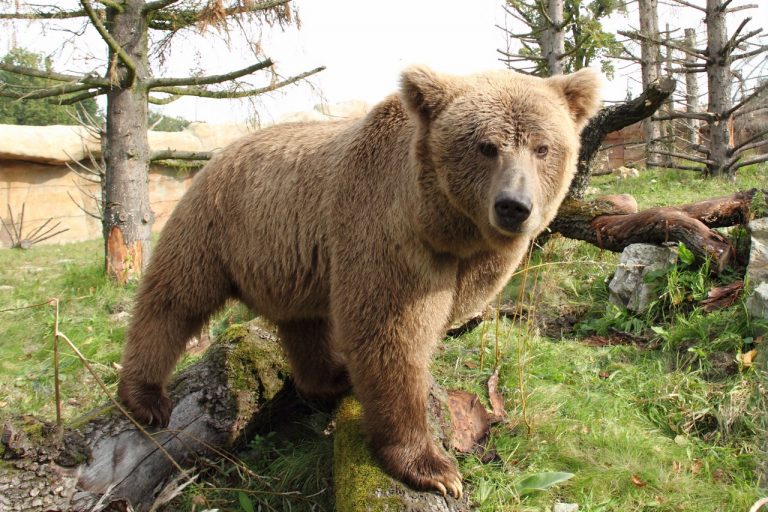Ending the Harmful Practice of Bear Dancing
In addition to bear bile farming and bear baiting, bear dancing is another equally harmful practice in some regions in Asia.

Bear dancing is a practice in which wild bears are captured, rendered defenseless and forced to perform for crowds against their will. What seems like a harmless show to outside observers is actually an extremely cruel exercise.
It was a custom in countries like India, Greece, Turkey, and Pakistan but today only bear owners in Pakistan and India still practice it.
Though the bear might appear to enjoy the experience, the training and indoctrination the animal undergoes can be painful and brutal.
Poaching The Victims For Bear Dancing
The bears in question are usually Brown bears, Sloth bears, or Asiatic black bears.
It all starts off with the cub being captured from the wild, often at a very young age. Since mother bears are so protective of their young, they are often shot and killed to avoid an attack. The abducted cubs typically witness this frightening murder. Thereafter, they must undergo the added stress of capture, transport and the resulting captivity.
By this time, the animal is quite frightened and tends to be docile around its captors.
Poachers will typically sell the cubs on the black market, and which they’ll spend the rest of their lives dancing on the streets for money.
Pain Under The Guise Of Training
Before the bear can be exposed to regular training, the animal’s body must be modified.
This often begins with the cub’s sharp teeth being filed down, knocked out with a hammer or extracted with little or no anesthetic. Sometimes, this leaves the animal susceptible to parasites like maggots.
Next, the cub’s claws are also removed. Finally, these painful procedures culminate in a restraint device that is attached to the animal’s muzzle area.
Sometimes this restraint is in the form of a chain link. Or a dirty rope threaded directly through a hole drilled or bored with a hot poker through the animal’s jaw or muzzle.
Once the cub is completely defenseless, training for the dance routine can begin.
Trainers sometimes heat up metal sheets and push the bear out onto them. Of course, the cub will not be able to stand in place or sit down without suffering burns. With no other option, the cub reacts by lifting one foot after another in a painful, agonizing regimen. This jerky movement eventually becomes second nature to the animal and looks like a “happy dance.”
Yet, other trainers utilize weapons to prod, poke and beat the cub into submission and force it to perform. The rope or chain in the jaw is also used to yank the animal around in order to help choreograph the dance routine. Some training methods also employ starvation tactics to entice the bear to do the master’s bidding.
Young cubs may also be subjected to what is called bear baiting in addition to bear dancing. Bear baiting pits the cub or adult trainee against vicious attack dogs in a brutal, often fatal confrontation.
Dancing bears often perform for up to 12 hours every day begging for money in the streets.
Where Is This Happening And Is There Any Help For Dancing Bears?
The practice of submitting captured bears to such harsh and egregious conditions is common in countries like India and Pakistan. Despite efforts to crack down on this mistreatment of such innocent and defenseless animals, trainers continue to defy the law. They do this by perpetrating the dancing and baiting shows for eager audiences willing to pay to watch.
Multiple organizations and efforts designed to stop these cruel and unnatural practices are currently rescuing these animals and rehabilitating them at sanctuaries where they receive regular care, affection and attention.
An organization called Wildlife SOS estimates that there were approximately 1,200 dancing bears in India in 1996. That’s despite the practice being outlawed there since 1972.
Wildlife SOS partnered with a group called International Animal Rescue to seize and rehabilitate over 620 bears, reportedly removing the last one in India from a trainer’s custody in 2009.
Unfortunately, Wildlife SOS and International Animal Rescue cannot adequately police all of the regions where this cruel practice takes place. Practitioners in India frequently cross the border into Nepal or Pakistan to continue making money off the dancing shows and bear baiting exercises.
Much more education and activism may be the only way to completely eradicate this awful ritual.
Nevertheless, here are a few things you can do to help:
- Never patronize a roadside bear or other animal show.
- Discourage other tourists from watching or paying to watch these shows.
- If possible, speak to locals about the cruelty of these actions if you happen to be in the vicinity.
- You can report to environmental authorities or even the police if you witness bear dancing or other animal cruelty.
Almost 2,000 bears are still out there suffering this way in India and Pakistan.







Please